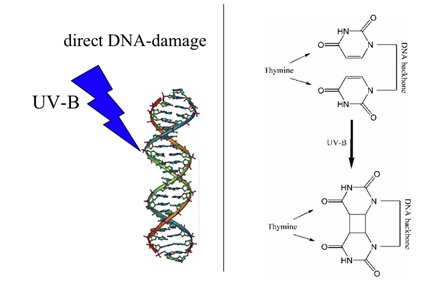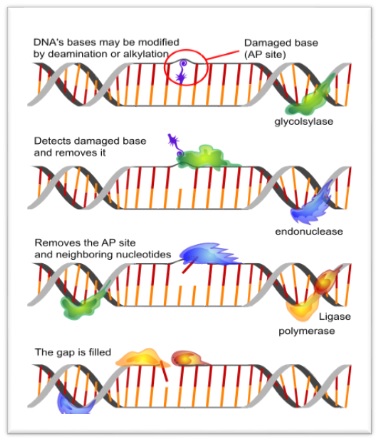DNA Damage and repair Assignment Help
What is DNA?
Several definitions and explanation can be easily found on DNA. Presently, studying and gaining information on DNA has become the centre of importance in science. This molecule is a strand of double helix but it carries lots of information that makes life possible on the earth. So, if we have to define DNA, it can be said that it is a genetic material, double helical in structure that carries all the hereditary information necessary for the existence of life.
Students generally face lots of problem in understanding the physical and chemical structure of DNA. We at assignmenthelp.net make it easy for you to understand this topic and complete DNA damage and repair assignments on time. If you are having less time, you can submit your requirement to the professional of this subject and they will do this job for you. You need not worry at all, just be relaxed and handle your work to this Assignment Help site; you will surely feel relieved and be well satisfied with the work.
DNA Damage
Since DNA is the combination of different chemical structure, it is natural that sometimes the alteration in these chemical structures may take place resulting in unexpected changes within and outside the body. Some of the reasons for damage in the DNA structure are described below:
Alkylation: It is the process of addition of alkyl group in the structure of DNA. Since DNA is a negatively charged molecule, so when electrophiles encounter these negative sites in the DNA molecule, they automatically attach carbon containing alkyl group to it, thus altering the chemical composition of the DNA molecule. Yes, it is not necessary that every time the process of alkylation will alters the DNA structure and result in mutation. It completely depends on the site of attachment of alkyl group to the DNA. Like if any alkyl group is added to N7 of guanine, not much of the difference is generated and hence is not harmful but when alkyl group is added to the N3 of adenine, it can result in mutation. It is because in case of guanine, no change in base- pairing properties takes place whereas in case of adenine, the resultant base i.e. when alkylation of the site takes place and a new base methyl adenine is created, polymerase fails to recognize it and hence results in damage to the complete cell.
Damage due to UV rays: We are well aware that UV rays are harmful for the skin. Exposure to UV rays can result in skin cancer. Why does this take place? There is also a mechanism within it. UV rays i.e. ultraviolet rays creates a dimer by linking two pyrimide molecules in the same strand of DNA with cyclobutane ring structure. This dimer when goes unnoticed and if not timely repaired can lead to mutation causing cancer. But our mother nature has an inbuilt protection for living beings on the earth. The presence of ozone layer in the atmosphere has served a sheath of defense against the UV rays emitted by the sun.

X rays and gamma rays: These rays are far more damaging than those of UV rays. Though they dont directly alter the bases of the DNA molecule, but indirectly it does so by ionizing the molecule that is present around the DNA. These rays change the molecule present around the DNA in reactive free radical; which results in alteration of bases in the DNA molecule. The attack by the reactive free radical can either result in breakage of one strand of DNA or both the strands. If its only the single strand that is affected, the repair can easily be done by the repair mechanism but if the effect is on both the strands, DNA can hardly be repaired and results in mutation.
DNA Damage and repair Assignment Help By Online Tutoring and Guided Sessions at AssignmentHelp.Net
The other form of damage also includes deamination and depurination in which adenine, guanine and cytosine get deaminated and purines is lost from the chemical structure of DNA molecule respectively. All these are the reasons for damage that is caused in a DNA molecule but the living system have solutions to most of these problems. Yes; when there is damage, there is repair as well. There is an inbuilt DNA repair mechanism that helps to correct and repair any damage caused in a DNA molecule.
Types of DNA repair:
There are different ways by which repair of DNA takes place. This includes repair DNA naturally and repair DNA by use of different mechanisms.
1. Light repair: it is also called photoreactivation which is the natural method of DNA repair. When the damage is caused by UV rays and pyrimidine dimer is formed, an enzyme named photolyase gets activated. This enzyme gets attached to the DNA molecule and breaks the pyrimide dimer thus restoring the molecule in its original form. Likewise, in case of methylation as well, an enzyme named O6 methylguanine methyl transferase comes in play. This enzyme accepts the alkyl group onto its one side. It is also called suicidal enzyme since it dies after performing its action and cannot be regenerated.
2. Excision repair: Excision repair is the process by which the damage in the DNA molecule can be repaired by the removal of the damaged portion and addition of new as required. It takes place in two ways: base excision repair and nucleotide excision repair. Base excision repair is the process that takes place generally when there is not much of the damage and hence repairs DNA easily whereas in those cases when DNA molecule is extensively damaged, nucleotide excision repairs comes in play.
a. Base excision repair: In this case, the damaged site is quickly recognized by an enzyme named DNA glycosylase, this enzyme works to break the bond between the damaged portions. Hence, when the bond between base and its sugar of damaged site is broken, AP site is created and then this site is recognized by the other enzyme called AP endonucleases that creates a nick in the DNA strand. After that DNA phosphodiesterase comes in play, this enzyme removes the AP sugar phosphate. Likewise, the other enzyme i.e. DNA polymerase 1 then starts the synthesis by repairing the gap that have been created and finally comes the DNA ligase that seals the nick that is left in the strand of DNA molecule. This way, one after the other, different enzymes comes in play in order to repair the damage caused in the DNA molecule.

Image Reference: http://commons.wikimedia.org/wiki/File:Direct_DNA_damage.png
http://commons.wikimedia.org/wiki/File:Dna_repair_base_excersion_en.svg
b. Nucleotide excision repair: This process comes in play when there is large damage in the DNA molecule. The enzyme involved is uvrABC also called exonuclease, which is the combination of three polypeptides. It cuts the DNA on the either side of damage and removes the damaged portion. Then DNA polymerase 1 comes in action and completes the proper synthesis of the DNA strand. Then, DNA ligase seal any nick that is left behind. This process of nucleotide excision repair works well in prokaryotes like E.coli but in case of eukaryotes the pathway and machinery is quite different. It involves genes and different enzymes and is complex than those of prokaryotes. These are some of the ways by which the damaged DNA is repaired in the prokaryotes. Repair of DNA is done quickly and if the process doesnt succeeds then the damaged DNA results in mutation of cell that may lead to different kinds of uninvited diseases.


